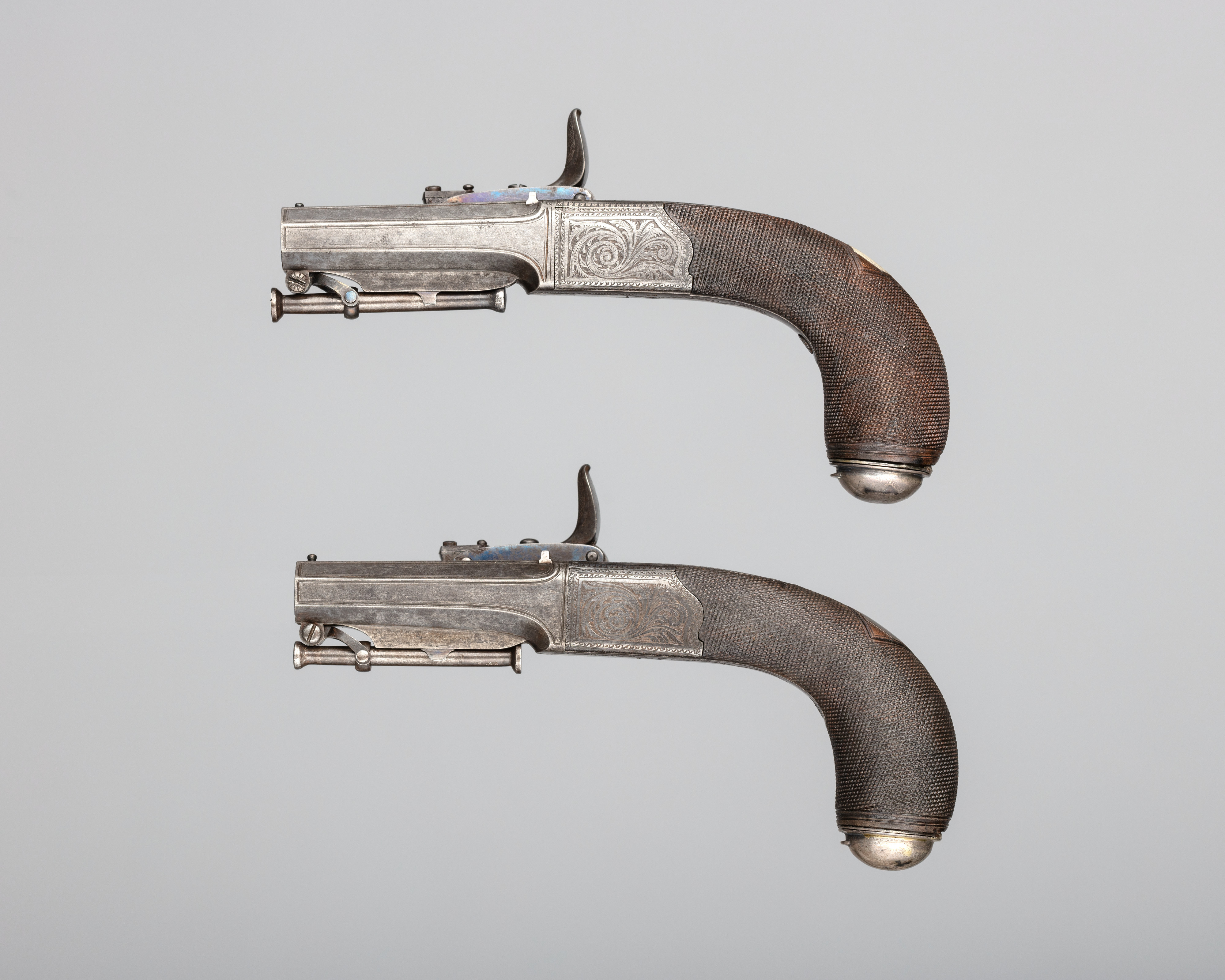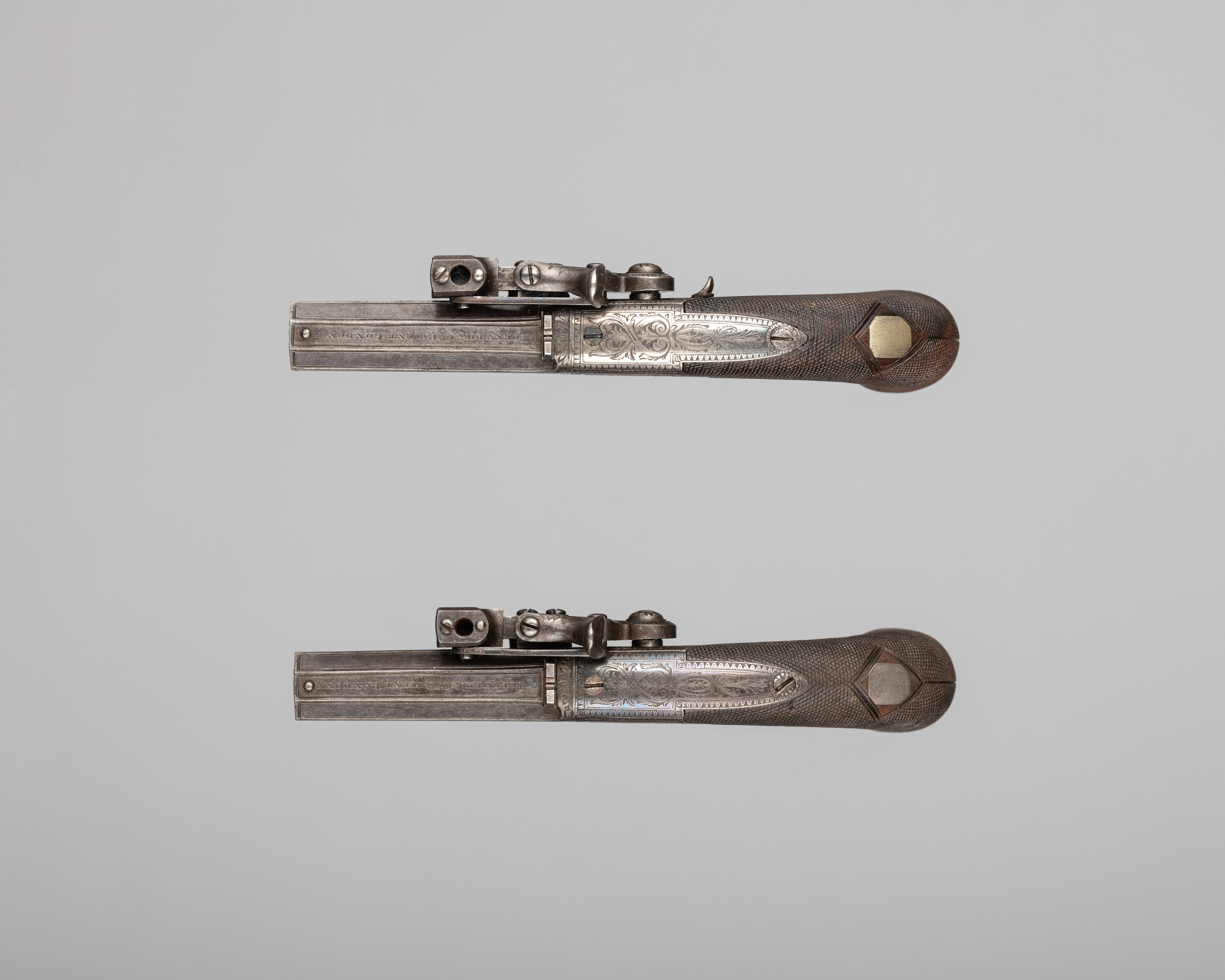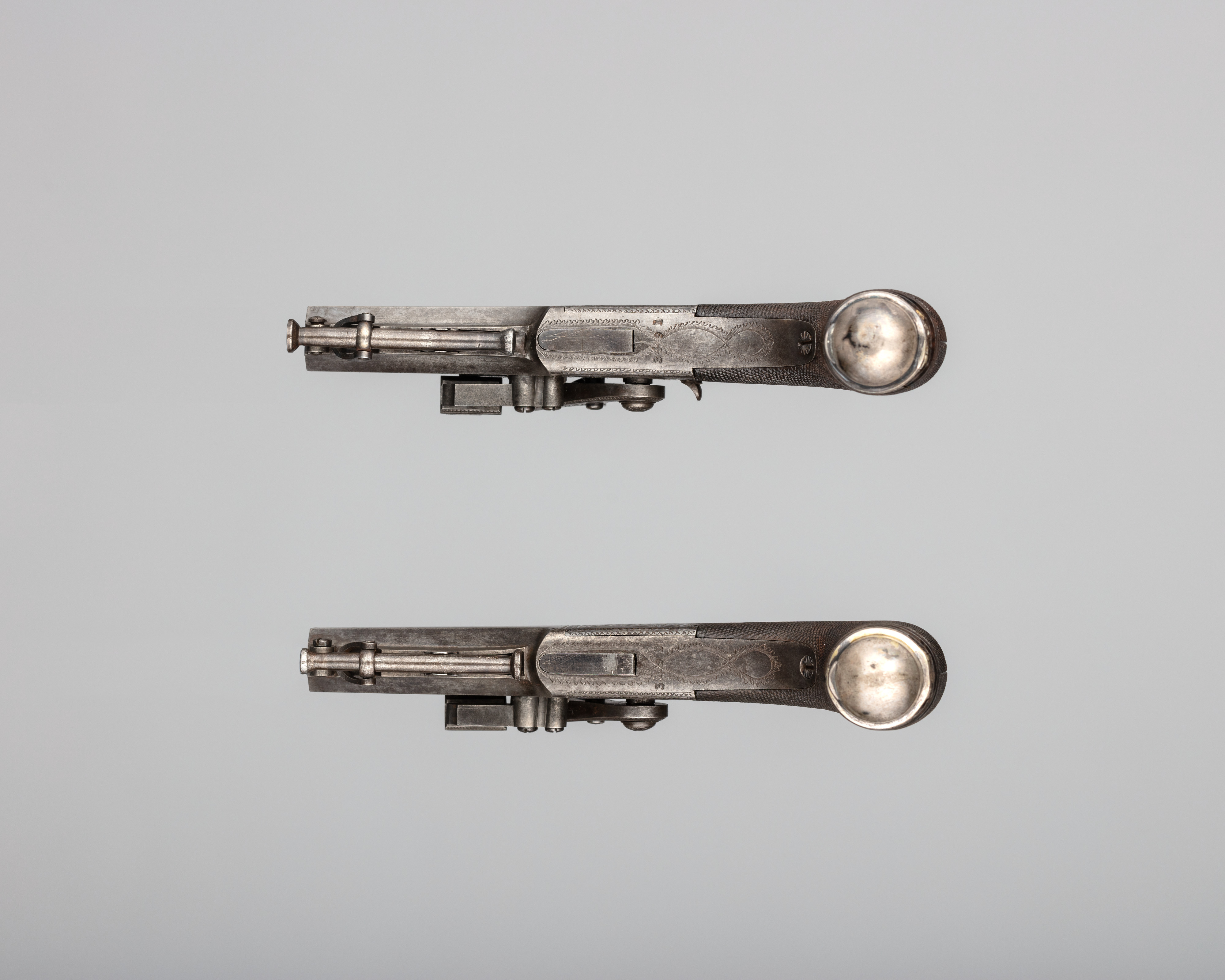Pair of Forsyth Patent Third Model Sliding Primer Pistols
Gunsmith Alexander John Forsyth British
Gunsmith Forsyth & Co.
Not on view
The Reverend Alexander Forsyth, a Scottish clergyman and exceptionally creative gunmaker and amateur chemist, invented and patented the first percussion lock in 1807. The most consequential firearms invention since the flintlock, the percussion system was a forerunner to the modern centerfire cartridge. As a means of ignition percussion mechanisms utilized a highly combustible chemical compound called fulminate, which burns more rapidly than gunpowder when struck with force. Forsyth continually developed his mechanism over the next decades. These pocket pistols feature a priming reservoir that slides on a track over the pan when the hammer is cocked, depositing loose fulminate powder into the pan and covering it, snapping forward out of the way when the trigger is pulled.
Firearms technology advanced at an extraordinary pace in Europe in the early nineteenth century. London’s elite gunmakers, intensely focused on optimizing accuracy, handling, and speed to meet the expectations of England’s sporting gentry were at the forefront of its development. Building on design advancements made in the 1780s and 1790s, particularly the refinement of the flintlock ignition mechanism, they secured in the next three decades dozens of patents for a dizzying variety of new technologies ranging from improved lock mechanisms to novel barrel-making techniques, competing to protect and market their inventions. Handmade with remarkable precision, many London firearms of the period display extraordinary mechanical ingenuity, in addition to being elegantly designed. This creative push in the firearms field may be framed within the broader context of the Industrial Revolution in England—a period marked by the glorification of technological advancements and the celebration of individual inventors and engineers.
This image cannot be enlarged, viewed at full screen, or downloaded.
This artwork is meant to be viewed from right to left. Scroll left to view more.





